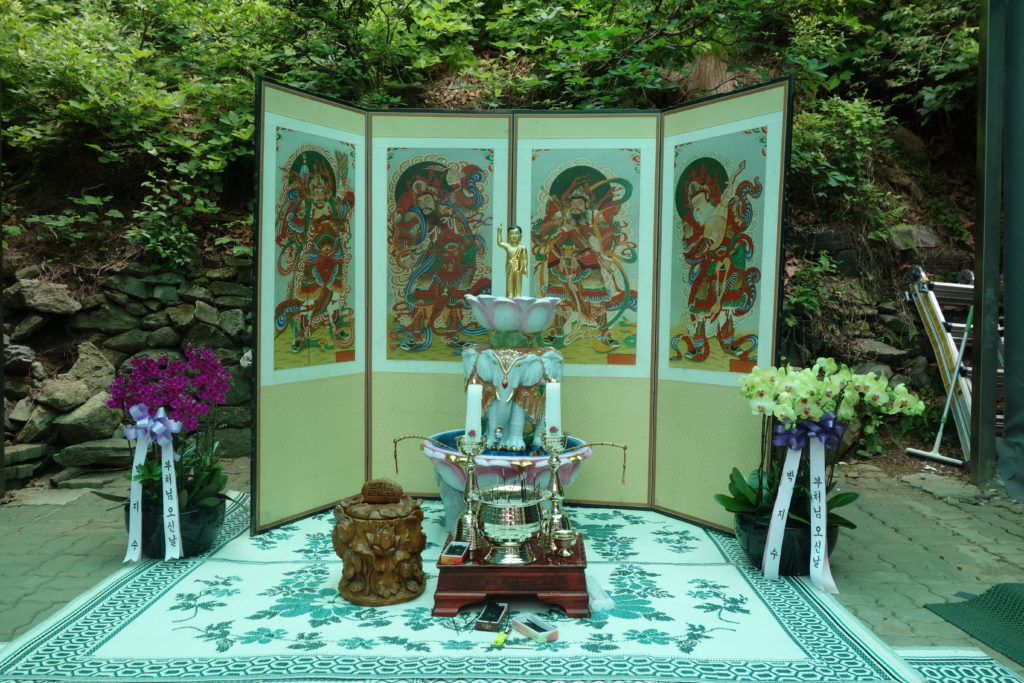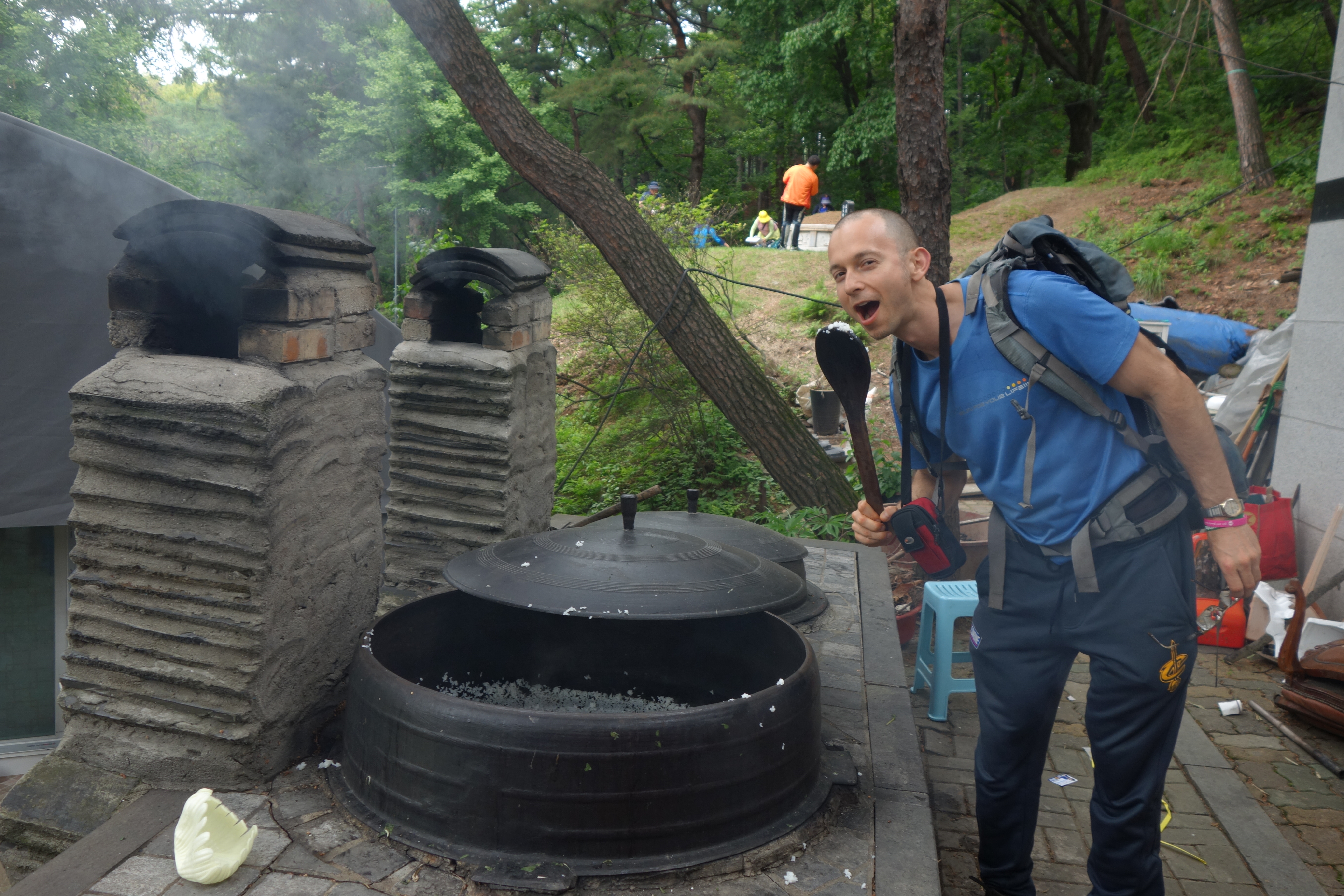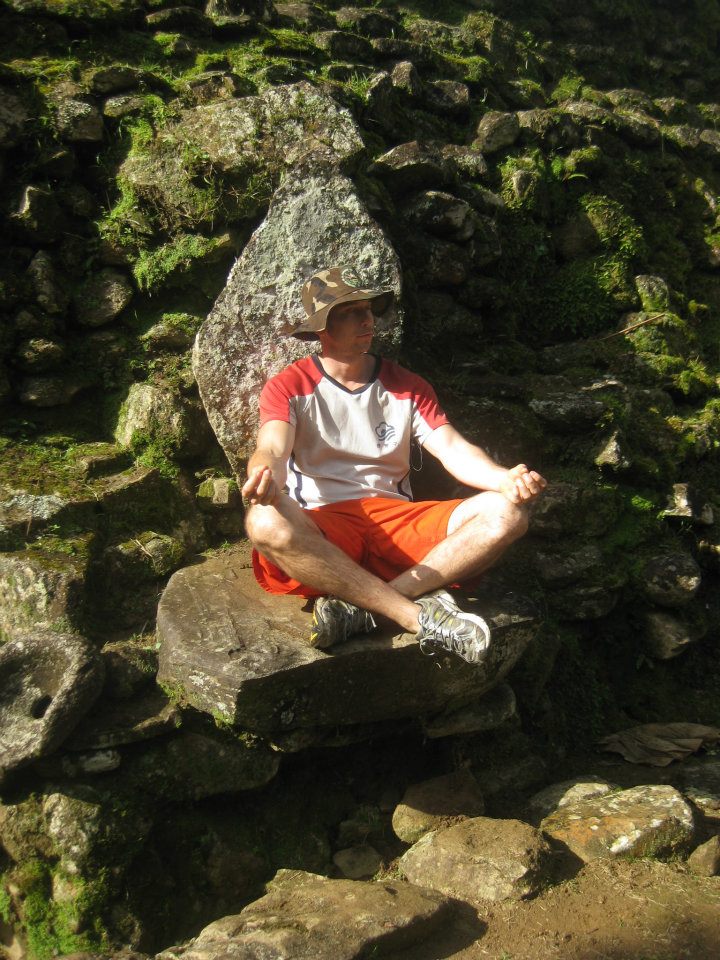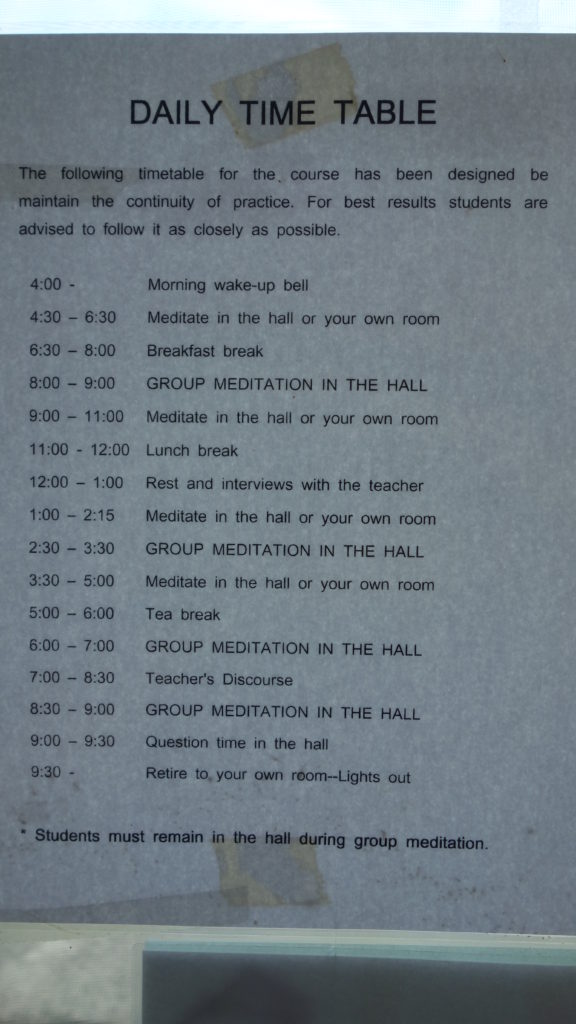Self Inflicted Torture

Written by George Balarezo, Intrepid Global Citizen
The schedule looked brutal but I was thirsty for self improvement. The path to everlasting peace and bliss is a constant struggle but I was up for the challenge. This time the retreat was only three days long but much more intense than I had ever expected. The day started at 5AM and ended at midnight. For the really motivated students, the day started at 3AM. Three hours of sleep and then back to work. This was the schedule for my Chan meditation retreat and I had no idea what was in store for me during the following days.
Chan flourished in China, and later was imported as “Zen” into Japan. It has been practiced throughout East Asia for more than 2,000 years. Master Yonghua, a monk and former MBA educated business man, is renowned for his enormous progress on the path of enlightenment and came to visit us from Los Angeles to teach this powerful meditation technique. This was indeed a very special opportunity that I had to take advantage of. I rushed to the meditation center in Seoul and was ready to tackle the inner workings of the mind.
The first day I was to be given instructions in the beginners’ hall. Much to my surprise, it had the atmosphere of a self inflicted torture chamber. The Dharma hall resembled the hall of hell minus the fiery entrance. A female monk was sitting with us in the lotus position with arms flailing and pounding on the ground while howling in pain. I wanted to go run over in her direction and make sure she was okay, but I was instantly paralyzed from shock at what was taking place. A few minutes later, tears streamed down her face as she began to slap the back of her bald, shiny head. It seemed as if she had just put herself in a jujitsu submission hold and was trying to see how long she could handle it before tapping out. People came and comforted her to make sure nothing was wrong. “Leave her alone. She is working hard and doing a great job,” exclaimed Master Yonghua. “Doing a great job? At what? Hurting herself to the point of excruciating pain? Who is this monk anyway and what exactly is he teaching?” I thought to myself in anguish. Suddenly, everyone backed off as she was now lying on her back with her legs still in the lotus position. After several more minutes of intense yelling and pounding on the floor, she finally came out of her bondage and let out a huge sigh of relief. Now she was sprawled out on the floor recovering from her face to face encounter with misery. The hue of her face slowly transitioned from beet red to that of a healthy human being. I was in utter shock at what I had witnessed. Why would anyone do such a devilish act to themselves? I stared at the female monk dumbfounded for a few minutes before collecting myself. I have to admit the masochist in me who enjoys the physical pain of endurance sports was rather curious. After all, I used to put myself through torturous physical exercise in order to achieve the goals I desired. The funny thing was I always learned to enjoy the pain. How different was this anyway?

I was distracted by the big scene and failed to notice all of the others in the room around me. They were all grimacing as if attempting to hold back the expression of pain that the jujitsu fighter monk so as not to draw attention to themselves. I needed an explanation very quickly.
The meditation technique is simple. Essentially, the Chan practitioner sits completely still in the lotus position until they reach their physical and mental capacity for pain. Even after practicing Vipassana for several years, I still have not been able to contort myself into anything that even resembles a half lotus position. Therefore, my task was to sit against the wall with my right leg extended and left foot resting on my right knee in order to slowly build the flexibility to sit in the lotus posture one day. Although this sounds very simple, after several minutes of practice I found myself in excruciating pain and had no other choice but to release myself from misery. Master Yonghua stated that in order to build a foundation for the path to enlightenment, one must train themselves to sit for extended periods of time in order to eliminate our fear of pain and misery. By experiencing pain and misery over and over again, one could build up a tolerance and eventually be freed from their aversion of suffering. Once one does not fear pain then nothing will ever be able to hurt you. Life can throw unexpected things at you and if you don’t know how to handle problems then it has the potential to eat you alive. Essentially, this was preparation for the worst day of my life, all the while preparation to be a champion in everything I do. One of my favorite quotes is from runner Steve Prefontaine- “I win because I can endure more pain than anyone you have ever met.” This indeed was championship training at it’s best.
“Sit longer and longer. If you can sit for one hour then sit for two or three hours without breaking your posture,” Master Yonghua stated calmly. “Sit for several days if you can. I will keep giving you tasks that you will absolutely loath in order to make you stronger,” he continued. I quickly realized I was just a novice at this point and would have to invest more than one hour per day into my meditation practice to make any significant headway along the path of enlightenment. Master Yonghua told us stories of himself sitting in the same lotus position for too long and tearing a tendon in his knee. This was from increasing his sitting time too quickly. He instructed us to stop if we started feeling fiery, burning sensations in our legs in order to prevent potential injuries.
There was an old Vietnamese monk in the back who did not look a day younger than 85 years old. The old man was famous for sitting in the lotus posture for nine days straight without eating, drinking or using the bathroom. He stood up during the course to offer his piece of advice, “If you can sit for three hours, then you will be able to sit for nine day.” Legend has it that he made the jump from three hours of lotus sitting to nine days. I glanced over in his direction several times during the course and saw him sleeping in the lotus position several times. Nothing phased him at that point.
Over the course of the retreat I realized how intense my aversion to pain is and set a goal of increasing my peak sitting time by two minutes per day. My time learning Chan that weekend left me humbler and more physically and mentally exhausted than I could ever imagine. I was extremely exhausted after the three day retreat. It was as if I had ran marathons for three consecutive days in a row. I limped out of the temple worn and torn from going to battle with myself, but somehow looked forward to putting this tool to work during my daily life. I am extremely gracious to Master Yonghua for teaching a tool essential for mastering the art of life and death. Enjoy the pain that life brings and nothing will ever be able to harm you!


